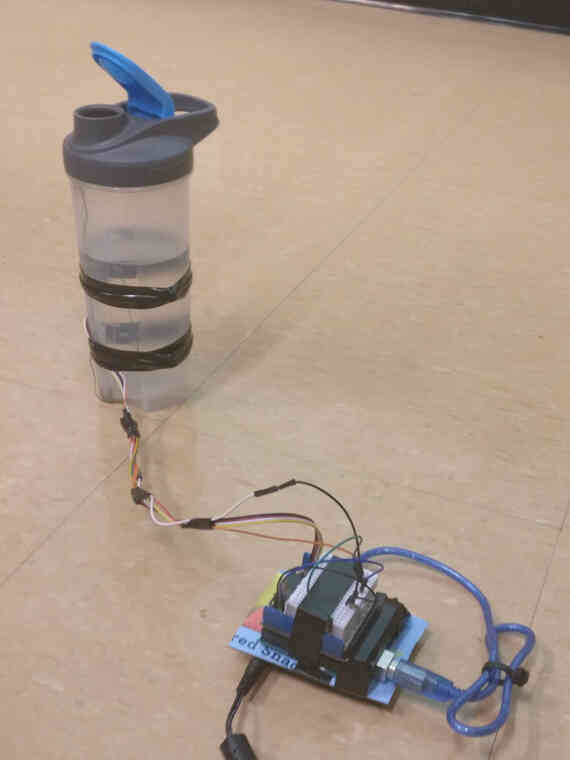
How it works
Our goal is to measure the height of the water, so we turn the water bottle into one big capacitor. By coincidence, this is exactly what I was covering in Physics class at the time!
The equation for capacitance is \(C=\varepsilon{}A/d\), where \(\varepsilon\) is some fundamental constant (i.e. never change), \(d\) is the separation of the plates (never changes), and \(A\) is the area of overlap between the two places (changes with the water level). Of course, this is a simplification, but since we don’t care about exact numbers, just relationships, it will work for us.
So far, we’ve shown that the capacitance will change with the water level. But how can we measure capacitance? The only way to do that is to charge the capacitor up, and measure how long it takes to discharge.

So that’s what we did. We used Paul Badger’s Capacitive Sensing Library, but here’s the procedure:
- Charge the capacitor fully.
- Disconnect the battery and start discharging the capacitor by flipping SW1.
- Start a timer.
- Measure the voltage over R1.
- When \(dV\approx{}0\textrm{V}\), stop the timer.
- Repeat.
Of course, this doesn’t give us capacitance in Farads. It gives us some value which is1 proportional to capacitance. And if we have capacitance, we have water volume, we just need to do some calibration.
Why it doesn’t work
There were issues with this idea:
Touching the bottle or even looking at it broke everything. People are giant bags of water, and they have significant capacitance. We were able to detect when the user was handling the bottle using other sensors, but does us no good when the user is just near the bottle.
The surface the bottle is placed on has a similar effect. Metal surfaces will return different values from wood surfaces, which will return different values from wet paper towels (and we had enough leakage to really require them!).
-
At the time we thought it was linearly proportional, but as shown by the equation \(V(t)=V_0e^{-t/RC}\), the relationship is more complex. ↩